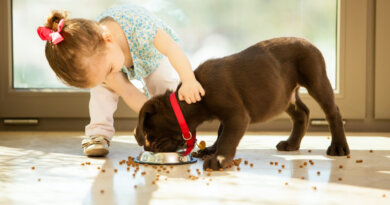Puppy Chewing Management – Whole Dog Journal
Ah, yes, management – the answer to so many behavior challenges. Puppies develop chew-object preferences in the early months of their lives, so the better you are at managing your pup’s access to non-chew items and directing him to desired chew objects, the sooner he will earn house freedom. If you give your baby dog the run of the house and he learns to chew on carpets, throw pillows, books, shoes, and coffee table legs, you will likely end up with a dog who chooses to exercise his jaws and teeth on inappropriate objects for years to come.
You’ll find yourself crating him frequently even as an adult dog, or worse, exiling him to a life of loneliness in the backyard, where he can “only” chew on patio furniture, potted plants, and the edges of your deck.
If, instead, you provide a variety of approved chew toys at an early age and manage your pup well to prevent access to your stuff, he’ll earn house privileges much sooner. By the end of his first year, you may be able to leave him alone safely while you go out to dinner, shopping – even while you’re away at work.
When you’re home, your puppy needs to always be under your direct supervision – for house-training as well as chew-prevention purposes. You may need to keep him on a leash or a tether, put up baby gates, or simply close the door of the room you’re in so he’s shut in with you and can’t wander into the bedroom to shred your shoes while your back is turned. If you’re too occupied to supervise, put him in his crate or exercise pen to keep him out of trouble.
Good management also requires “puppy-proofing” the house. Don’t leave shoes – a favorite of most unsupervised dogs – where your pup can get them. Put all inviting objects out of his reach, just as you would for a two-year-old toddler. If you can’t put electric cords out of his reach, you can slide them through a piece of PVC pipe or use a commercial product (such as the CritterCord) to prevent cords from getting chewed. The less often you have to intervene to retrieve something from him that he shouldn’t have, the better.
For more information on puppy chewing, purchase Destructive Chewing, an ebook from Whole Dog Journal.





